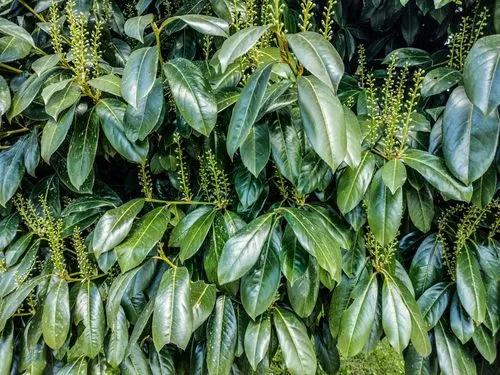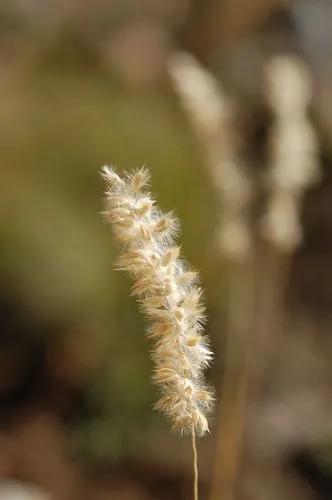Some have green pseudobulbs and long racemes with small flowers and a dominant lip. They are mostly golden yellow with or without reddish-brown barring, but some are brown or yellowish-brown. Other Oncidium species have white and pink blooms, while some even have startling, deep red colors in their flowers. Another group has extremely small pseudobulbs and stiff, erect, solitary leaves. These cylindrical leaves act as a water reserve. They have long racemes with yellow flowers that seem to fan out at the top. Sizes of these orchids can vary from miniature plants of a couple of centimetres to giants with 30 cm-long leaves and racemes of more than one metre long. These species, known as the Mule-Ears, are now classed as Psychopsis. Formerly there was a third group, called the Variegata or equitant oncidiums. They have no pseudobulbs, giving fan-shaped shoots of less than 15 cm, with triangular section leaves. These oval, broad and spongy leaves act as storage organs. Their flowers are most complicated with exquisite colors. The sepals are somewhat fleshy. The petals and the lip are membranaceous. These orchids are now classified as Tolumnia. Cyrtochilum is another genus that many Oncidium species have recently been reclassified into; Cyrtochilum species have extremely long, winding inflorescences that can sometimes reach 20' or more, curled petals that result in three-pointed blooms, and rambling growth habits in which each new pseudobulb appears on top of the old one.
Odontocidium Care
Oncidium Odontocidium



How to Care for the Plant

Water

During the growing season, water daily or every other day. Be careful, though, because drainage is an absolute priority. The potting media must be perfectly free draining. The plants can also be grown on slabs or in baskets. Because oncidiums have large, fleshy pseudobulbs and masses of roots, they are prone to rot.1 If you see a pseudobulb beginning to rot, cut it out with sterile snippers and reduce the amount of water. In the winter, reduce watering to bimonthly or less. They can withstand considerable drought because of their large pseudobulbs. Wrinkled pseudobulbs generally indicate a lack of water.

Fertilizer

During the growing season, feed with a weak orchid fertilizer bimonthly or scatter slow-release pellets in the growing media at the beginning of the season. Although there are many species, in general, the larger the plant, the more heavily it will feed.

Sunlight

Oncidiums are much more forgiving of bright or direct light than other popular orchids, especially the phalaenopsis. Oncidiums can handle direct morning light and even prefer bright to very bright conditions. They tend to enjoy the same light that dendrobium orchids prefer.

Soil

Oncidiums can be found in many habitats, from semiarid subtropical lowlands to cool and misty cloud forests. Generally, the most popular oncidiums, which feature small yellow flowers, large pseudobulbs, and strappy leaves, are intermediate to warm orchids. Do not expose them to cold drafts or temperatures below about 50 F. Even temps in the mid-50s will cause the plant to slow its growth if exposed long.

Temperature

Oncidiums can be found in many habitats, from semiarid subtropical lowlands to cool and misty cloud forests. Generally, the most popular oncidiums, which feature small yellow flowers, large pseudobulbs, and strappy leaves, are intermediate to warm orchids. Do not expose them to cold drafts or temperatures below about 50 F. Even temps in the mid-50s will cause the plant to slow its growth if exposed long.

Popularity

11 people already have this plant 5 people have added this plant to their wishlists
Discover more plants with the list below
Popular articles






